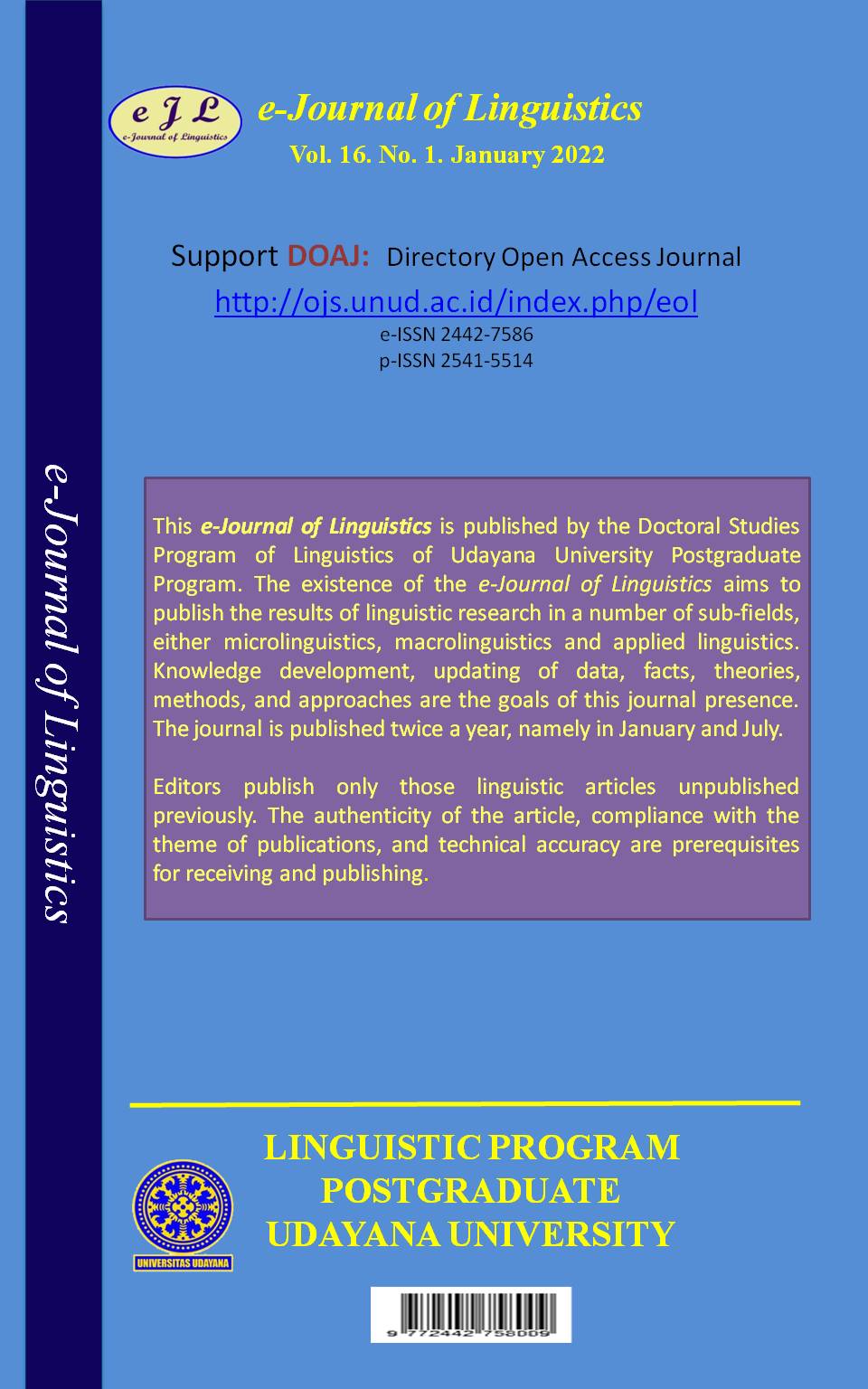The Uniqueness and Attractiveness of the Bima Language Linguistically
Abstract
This study aims to determine the uniqueness and attractiveness of the Bima language linguistically, this is based on the fact that each regional language experiences its own characteristics. The research method used is qualitative with oral speech data sources, written data and language intuition. The research sample was in Lere Village, Parado District, Bima Regency, West Nusa Tenggara. Results From the study it was found that the Bima language did not have a final consonant in every word, all words in Bima ended with a vowel, even at the beginning of the word using vowels and there were additions or changes to the phonemes in the word. In addition to this, there is the elimination of the final consonant in a name, there are clusters (double consonants) at the beginning of the word. It was also found that words that have the same phoneme have different meanings in Indonesian by adding an apostrophe before the letters b or d. There is a phonemic relationship between nasal consonants in vocabulary. There are phonemes / consonant vocabulary that are interconnected in terms of meaning. Finally, for the clotting pattern in Bima, there are four syllable patterns, namely the (V), (KV), (KVK), and (1/2 KV) patterns. Consonants are not found in the closing syllables so that Bima is classified as a vocal language.
Downloads
References
Bungin, Burhan. 2003. Qualitative Research Data Analysis, Philosophical and Methodological
Understanding Towards Mastery of Application Models. Jakarta: Raja Grafindo Persada.
Harimurti Kridalaksana. 1983. Dictionary of Linguistics. Jakarta: Gramedia.
Merriam, Sharan. B. 2009. Qualitative Research: A Guide to Design and Implementation. San
Francisco: Jossy-Bass.
Muslich, Masnur. 2010. Grammar of Indonesian Language, Study Towards Descriptive Grammar.
Jakarta: Earth Literacy.
Sugerman. 2011. Symptoms of Bima Language in Phonology and Morphology Studies. Lombok
Post, p. 10.
Sugiyono. 2015. "Quantitative Research Methods, Qualitative, and R & D". Bandung:
Aflabeta.
Sumarsono. 2000. Attitudes and Behavior of Loloan Malay Speakers towards
His language and other languages. Jakarta: BPK Gunung Mulia.
Sumarsono, 2011. Sociolinguistics. Yogyakarta: Student Library.
Spradley, James P. 1980. Participant Obsevation. USA: Holt Rinehart and Winston.
Tama, et al. 1996. Phonology of Bima Language. Jakarta: Development and Development Center
Language.
Tomkisn, G.E., and Hoskisson. K. 1995. Language Arts: Strategic Content and Teaching.
Boston: Allyn Bacon.
Verhaar, J. 2010. Principles of General Linguistics. Yogyakarta: Gadjah Mada University
Press.

This work is licensed under a Creative Commons Attribution 4.0 International License











